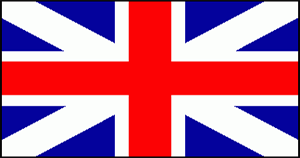War of 1812 Battles |
Colonial Wars |
American Wars |
Battle of Fort Michilimackinac (Mackinac)
July 17, 1812 in Mackinac, Indiana Territory
Books on The Battle of Fort Michilimackinac are available from Amazon.com
 |
|||||||||||||||||||||
|
The small island of Michilimackinac rests in the narrow waterway where the northern tips of lakes Huron and Michigan meet. Despite it’s size, it is of great strategic importance. It represents the gateway to the lucrative northwest fur trade.
Lt. Porter Hanks, in charge of America’s most remote garrison at Fort Mackinac, knows his island outpost well and has had an bad feeling about it for over a week. Relations have become inexplicably cool with the Indians of the area and, as each day passes, an increasing number paddle past the fort heading north. Hanks can only assume that they are gathering at the British fort on St. Joseph’s Island but he cannot guess why.
Forty-five miles northeast, a combined force of First Nations warriors, voyageurs, traders and British regulars have spent several days preparing to seize control of Mackinac. Upon learning of America’s declaration of war, Gen. Issac Brock immediately dispatched a team of voyageurs to canoe the 1,200 miles up to St. Joseph’s and officially confirm the conflict they had anticipated for months. An order to attack Fort Michilimackinac follows shortly after. The American Secretary of War Henry Dearborn fails to exercise anything like Brock’s tactical foresight. Hanks has not heard from him in 9 months.
In the early morning of July 17, Hanks is asleep when 70 war canoes and 10 cramped bateaux deposit the British force only 2 miles away at the north end of Michilimackinac. By daybreak, 2 British cannons have their sights set on the Americans from a hill overlooking the fort. All the inhabitants of the village have been quietly removed from their homes and are safely being guarded by the British in the distillery at the south end of town. Everyone but Hanks and his battalion of 60 ill and out of shape regulars, knows that the island has been invaded.
As the fort awakens, the British make their presence, and that of their Indian allies, known. The seasoned officer Hanks reacts intuitively and carries out the textbook defensive measures, but as he sees his men scramble to arms, reality sets in. His rusty troops are badly outnumbered by the well-positioned British, and in his eyes the presence of the Indians equals the potential for a massacre. The British accurately interpret the American captain’s worried state of mind and they approach under a flag of truce to give Hanks the opportunity to surrender. His friends, civilian hostages in the truce party, urge Hanks to save his men and give up the fort. He does not need any more convincing. The British force has seized this strategic fort by sheer cunning. Hanks and his men become some of the first official prisoners in a war they didn’t even know had started. The traders, Natives, and British regulars eagerly seize the fort’s supplies of whiskey, pork and furs.
Hanks and his men are shipped off to be paroled in America while the remaining inhabitants are made to swear allegiance to the British King. The taking of this oath doesn’t seem to bother them since many were British subjects before the Americans landed on their island less than 20 years before.
